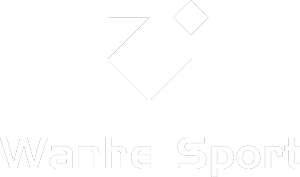As a hockey enthusiast, You might always be on the lookout for ways to improve your skills and stay on top of your game. Ice hockey is a sport that requires a lot of skill, practice, and dedication to be successful.
Finding the time and resources to practice on real ice can be challenging for many players. That’s where HockeyShot’s Synthetic Ice Tiles come in. These tiles offer a realistic and cost-effective solution for players to practice their skills at home.
In this post, we will compare two of HockeyShot’s popular synthetic ice tiles: Revolution and Extreme Glide. Whether you’re a seasoned athlete or just starting out, these tiles will provide a realistic and affordable alternative to traditional ice rinks.
So, let’s take a closer look at the hockey synthetic ice tiles to review, what makes these tiles stand out, and why they’re worth considering.
Synthetic Ice Tiles by HockeyShot
HockeyShot offers a range of synthetic ice tiles for hockey players to practice their skills. Specifically, they have two options that are designed for skating: Extreme Glide and Revolution. Both tile types simulate the feeling of ice and provide a realistic surface for practicing skating drills. In addition to the skateable tiles, HockeyShot has a lot of options for non-skateable tiles ideal for stickhandling, shooting, and passing routines. However, we will only focus on the Extreme Glide and Revolution tiles, the two options that allow for skating practice.
Revolution
HockeyShot’s Revolution tiles provide a convenient way for hockey enthusiasts to bring the ice to their homes. These tiles come in 18.5″ x 18.5″ sizes and contain puzzle edges that enable easy connection for an uninterrupted surface area. Once attached, each tile contributes to a total skateable surface area of 18″ x 18″, equivalent to 2.25 sq ft. The Revolution tiles come in two thickness options: regular with a thickness of 7/16″ and premium with a 7.5/16″ thickness. The premium version offers a longer lifespan, while the premium and regular versions have no difference in functionality. These tiles are a great investment for players looking to improve their skills at home without relying on expensive ice time at a rink.
Extreme Glide
HockeyShot’s range of skateable tiles includes the Extreme Glide line, designed to provide a seamless and versatile surface for practicing ice hockey skills. These tiles are puzzle edged, which makes it easy to connect them, and once they are in place, they create a skateable surface that is available in either 16 sq ft (4′ x 4′) for the 3/8″ thickness or 32 sq ft (4′ x 8′) for the 1/2″ and 3/4″ thicknesses. Whether you’re looking to work on your shooting, stickhandling, or skating, Extreme Glide tiles offer a convenient and cost-effective way to practice your skills from the comfort of your own home.
Revolution vs. Extreme Glide
When it comes to comparing the Revolution and Extreme Glide, there are a few key differences to consider.
Lifespan
The lifespan of HockeyShot’s Revolution and Extreme Glide Synthetic Ice Tiles varies depending on usage, maintenance, and thickness. The regular Revolution tiles can last 3-5 years, while the premium version lasts 5-7 years. Extreme Glide tiles have longer lifespans, ranging from 7-10 years for residential use and 5-7 years for commercial use. The Revolution tiles’ thickness affects their lifespan, as they have a ribbed reinforcement that makes them lighter and more elastic. The Extreme Glide tiles have two skateable sides, contributing to their longer lifespan. Overall, usage and care also play a significant role in determining the longevity of the tiles.
Performance
Extreme Glide and Revolution tiles have a comparable friction coefficient when it comes to skating, making them less slippery than real ice. However, the construction of both tile types is different, with Revolution tiles having a ribbed mounting underneath the surface and Extreme Glide tiles being solid with slight to no elasticity, giving them a more natural feel. The larger size of Extreme Glide tiles means fewer connection seams, which reduces the possibility of an uneven surface. In contrast, the elasticity of Revolution tiles allows them to be employed on irregular surfaces without seams popping out. However, irregularities in a level surface can put a strain on the connection seam in Revolution tiles, whereas it is less likely with Extreme Glide tiles.
Set-Up and Maintenance
The installation process for the Revolution tiles is very easy since they are lightweight at only 2.2 lbs/tile, allowing for one person to easily carry and assemble them without any special tools needed except for a rubber mallet. On the other hand, the Extreme Glide tiles are heavier and larger, weighing 31 lbs apiece for the 4’x4′ 3/8″ thick tiles and 80-120 lbs apiece for the 4’x8′ 1/2 “-3/4” thickness tiles. Two people may be required to carry and position each tile during the 1-2 hour installation process, which may take longer for larger commercial installations.
It’s crucial to know that figure skating toe picks can harm tiles, regardless of the type. Additionally, due to synthetic ice’s elevated friction levels, skates require more frequent sharpening when skating on these tiles.
Cost
Buying synthetic skating tiles, such as those offered by HockeyShot, can be a significant investment. The Extreme Glide tiles are generally more expensive than the Revolution tiles, but both options are priced similarly to other synthetic ice products on the market. It’s worth noting that volume discounts may be available, so it’s always a good idea to check for special offers.
As HockeyShot recommends, there should be enough space to accommodate at least 200 sq ft of the skating surface. A larger skating area allows players to toil on more gaming facets, but it also means a higher cost for the necessary number of tiles.
While the initial investment in synthetic skating tiles might seem steep, it’s important to consider the long-term benefits. Having access to a consistent skating surface at home can be invaluable for serious hockey players who want to improve their skills. In the long run, investing in skating tiles may be better than paying for regular ice time or travel expenses to a skating rink.
Revolution vs. Extreme Glide: What’s the Better Option?
Choosing between HockeyShot’s Extreme Glide and Revolution synthetic ice tiles ultimately depends on an individual’s situation.
To make a financially smart decision on choosing the best Best Synthetic Ice Tiles, one should realistically calculate the amount they expend on pucks and sticks sessions over some years and compare it to the cost of skating tiles.
If the latter option is more cost-effective, the buyer should assess their condition while deciding between Extreme Glide and Revolution tiles.
Revolution tiles can be laid on a somewhat uneven surface, are less expensive, and are more adaptable.
Extreme Glide tiles offer a good skating experience and have a prolonged lifespan, making them ultimately more cost-effective.
With these factors in mind, buyers can make an informed decision based on their needs and preferences.

